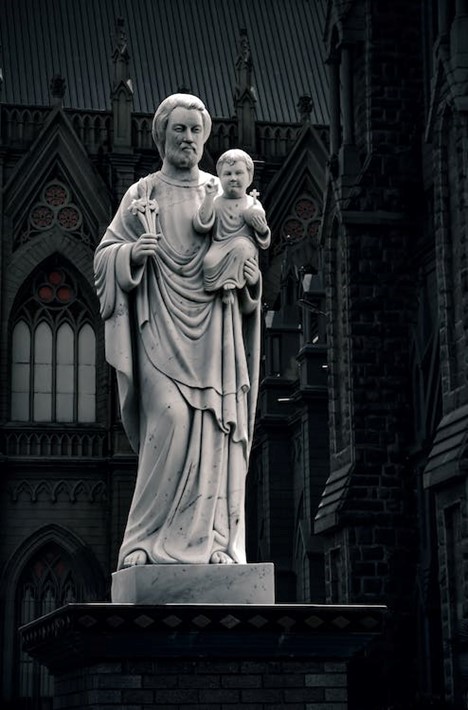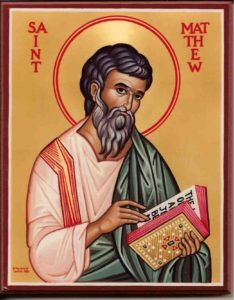Advent - Year A
A collection of Advent resources and Christmas resources including sermon ideas, whole sermons, sermon series ideas, and more.
Advent Resources 2022
Quick Links
View our collection of Advent resources and Christmas resources as well as trusted content from around the web. The current week’s Sermon Commentaries on all four of the Lectionary passages are available every Monday. Looking for resources on other passages? Check out our abundant and easy-filter Library.
Year A Reflections
First Sunday in Advent Resources, November 27, 2022
Gospel Text: Matthew 24:36-44

Reflection:
No mall would ever add any apocalyptic music to its holiday repertoire of Muzak over the loudspeakers. No Hallmark Christmas card would feature awesome (and perhaps fearsome) images of judgment day. And in truth neither do many churches spend much time on the kind of imagery Jesus uses in Matthew 24 (and in its parallel Olivet Discourse passages used in other Advent Lectionary years). No, whether in secular settings or more religious ones, the end of the year is all about Jesus’s first Advent in Bethlehem but not about the Advent that is yet to come.
The Church has traditionally begun the Season of Advent with apocalyptic passages about the end of history and Christ’s return for one very simple reason: if the events Jesus foretells (and forthtells) in Matthew 24 will never happen, then there is actually not much to celebrate surrounding his first arrival in Bethlehem. If Jesus is not coming back fully to usher in the kingdom of heaven that he preached about, then his original birth is drained of meaning too.
It ought not spoil anyone’s “Christmas spirit” if we spend the first Sunday in Advent pondering the ultimate things to which Jesus points. In a world as full of sorrows as this one, would it hurt to have a longing and an expectation for Christ’s Parousia and his ushering in a better day? In 2022 we have endured the third year of COVID disrupting our lives and taking hundreds of thousands more lives worldwide. A war in Europe that some thought impossible to imagine began early in the year in Ukraine and tens of thousands of people have died in the conflict including so many women and children. We live in a world of hunger and want, of economic crises and incessant sorrow.
At Christmas of all times, how can we look at all that and not long for the second Advent of Jesus? If Christ is coming again, then and only then does his first Advent mean anything. In fact, then and only then Christ’s first arrival means flat out everything.
Second Sunday in Advent Resources, December 4, 2022
Gospel Text: Matthew 3:1-12

Reflection:
The conventional wisdom of Hollywood claimed that it was always a bad idea to act in a movie with children or dogs. Because cute kids and spunky pups have a way of upstaging even the finest of actors. They always steal whatever scene they’re in. But this is something we can see in all of life. Have you ever attended a lecture or speech where the person introducing the speaker came off as far more interesting and dynamic than the actual speaker? Or perhaps you can remember the dynamism of Barack Obama’s speech at the Democratic Convention in 2004, meaning that the actual nominee of John Kerry could only look a bit flat by comparison. Who wants to speak right after a powerful orator?
In some ways John the Baptist did this to Jesus. John was a firebrand of a preacher who put on such an incredible show on the banks of the Jordan River that people came out in droves to hear him. John’s strikingly odd attire, his vivid imagery, and his plucky willingness to get right in the faces of Judaism’s highest ranking religious leaders made him a public preacher and spectacle with few if any peers.
How could Jesus compare to that? Oh, had Jesus lived up to John’s hype—laying an axe to the root of bad trees, baptizing people with fire—he might have had a chance not to get upstaged by John but... well, that was not quite Jesus’s style as it turned out (and stay tuned for next week’s Advent reading to see how John reacted to that at least briefly). One could almost conclude that God took quite a risk letting this man be the warm-up act for Jesus.
But God knew he had to get people’s attention. He had to make clear the need for repentance and renewal. He had to make people hungry for the very salvation that only the Son of God incarnate could bring. As a kind of new Elijah, John the Baptist fit the bill very well and accomplished his vocation exceedingly well too.
True, even forty or so years later and well after Jesus has ascended into heaven, the Apostles still ran into people who were just sure John the Baptist had been the promised Messiah. They still bumped into people who knew a lot about John’s baptism but had never heard about any baptism from Jesus in the Name of the Father, Son, and Holy Spirit. These things happen. But today no less than 2,000 years ago, we still need to see John’s spectacle and hear his shrill message if we will ever find ourselves ready to welcome Jesus as the true Messiah of God.
Third Sunday in Advent Resources, December 11, 2022
Gospel Text: Matthew 11:2-11

Reflection:
John the Baptist was rotting in prison. And having spent some time in the last ten years with men who had been imprisoned for a while, I know as a fact that prison messes with a person’s head. One man I know who is in prison for life became such a model prisoner after he accepted Jesus into his life that eventually he got moved from a regular cellblock into a house within the prison where he had his own bedroom. But if you think this man rejoiced at this major upgrade in living conditions, you are wrong. He spent the first many nights in his private bedroom terrified by the silence and unable to sleep a wink.
Prison messes with your head. It’s hard to know whether John the Baptist ever anticipated he would end up in jail. But if he sensed that God had called him to be the last Old Testament prophet, then he had only to look back on what had happened to a lot of his prophetic forerunners to get an idea that this preaching gig might not end well. Once John crossed one too many lines in criticizing the amorality of King Herod, his public career ended and he went to prison for the rest of his days right up until Herod took his head off.
John got reports now and then of what his cousin Jesus was up to but a lot of it did not set John’s pulse to racing apparently. A lot of it seemed to pale in comparison to the fiery imagery John had used to predict the arrival of God’s Messiah. So John got to thinking: “Did I peg the wrong guy?” He dispatched some friends to ask Jesus the question directly and in our passage for this Third Sunday in Advent we hear Jesus’s answer. Yes, Jesus really was fulfilling the expectations of Israel and the words of the prophets and even what John had preached, even if it was coming across a little less action-packed than John might have described.
As we preach on this Advent Sunday, perhaps we could wonder if we all might not feel a little disappointed or disoriented if we were really able to journey to the real Jesus in the manger or watch his actual ministry unfold. In our collective imagination we have imbued the Christmas story and all of the stories of Jesus with huge meaning. We tend to think that when Jesus was around, everyone must have been aware he was preaching or telling a parable and dropped everything to tune in. But probably had we been there we might have been shocked that as Jesus healed and taught, the world around him buzzed on as usual. Jesus’s words in a marketplace might have gotten all-but drowned out by the sounds of passing donkeys or carts or people chatting loudly together. There would have been no holy spotlight beaming onto Jesus to make him the center of attention, no megaphone or amped up sound system to make sure everyone caught every word this humble man spoke.
God chose a seemingly weak and lowly path to get the world saved. John the Baptist noticed this and wondered about it. Maybe we would have too. But if John died believing Jesus was the One long promised and if we believe that today, the reason is the same: God’s great gift of faith alone by grace alone. And that is no small thing in Advent, at Christmas, or anytime for which to give God our thanks!
Fourth Sunday in Advent Resources, December 18, 2022
Gospel Text: Matthew 1:18-25

Reflection:
Sunday School Christmas programs in the history of the Church would have been pretty short affairs if Matthew’s account of Jesus’s birth were all we had to go on. You wonder if the Church would ever have even tumbled to put on Christmas pageants were it not for Luke 2. Because the eight verses Matthew gives us—only the last couple of which actually even mention Jesus’s birth—are not the stuff of stirring drama. In fact, considering that Joseph had concluded that his fiancé Mary had been sleeping around on him and ended up pregnant as a result is not the kind of story we tell in Sunday School settings. This all traffics in the awkward.
Joseph is the silent partner in God’s drama of redemption. He never speaks a word in the Bible. He is a righteous man who lets his actions do the talking for him. He is also the first “righteous” man in Matthew’s Gospel who is forced to revise his definition of righteousness. Fast forward four chapters in Matthew and you get to the Sermon on the Mount where Jesus repeatedly upends conventional definitions of the Law and what it means to be a righteous person (and it mostly was not what the Pharisees and others thought at the time).
Short though these verses are, Matthew gives us one other lyric truth: the child to be born of Mary would be named “Jesus” all right but his deepest name would be Immanuel. This is the theme of Matthew’s Gospel: God is now “with us.” And Matthew will make sure to bookend his Gospel when at the very end in chapter 28 Jesus assures his disciples “Surely I am with you always.” Once God came to be “with us,” he never stopped.
So yes, it is great to celebrate in our Christmas programs the stable and the manger and the angels and the shepherds and the (somewhat misplaced) Magi and all the rest. But in his concise account of Jesus’s advent, Matthew gives us the one piece of Good News that alone makes all of the other trappings of Advent and Christmas worth anything: what it all means is that God is with us and nothing will ever change that fact. “What can separate us from the love of God in Christ Jesus the Lord?” Paul will ask the Romans decades after Jesus’s birth. Because of the truth of Immanuel, Paul knew that this was all-but a rhetorical question. Because what can separate us from the With-Us-God? Nothing.
Christmas Day Resources, December 25, 2022
Gospel Text: John 1:1-14 or Luke 2:1-14

Reflection:
We preachers who use the Revised Common Lectionary can take our pick most any Christmas Day. We can go with the ground level view of Luke 2 and watch the drama unfold from the perspective of the barn animals or the shepherds out in the fields by night. Or we can take John’s lofty and cosmic perspective on it all and view the drama from 30,000 feet at dizzying heights of theological reflection. The birth at the center of it all is the same either way. But precisely how we frame up the story will depend on the preaching text we choose.
The students at the seminary where I teach preaching often ask how they will be able to keep their preaching fresh in the years to come after they graduate and inevitably someone will mention Christmas as the prime example. How can you find something new to say every time Christmas rolls around when the available biblical material is not exactly endless? Usually I say that there is no harm in repeating certain things every year. After all, getting too innovative in the pulpit is sometimes a quick path to heresy! And in the rest of life when we celebrate the birthdays of our children, no one finds it boring that we rehearse the same story of the child’s birth or get out the same photo albums that have all the baby pictures we took way back when.
Yet there is a sense in which we do want to make the Good News of Christmas also fresh news every year. Years ago a pastor friend of mine who ministered in East Germany prior to the fall of the Berlin Wall sent me a Christmas card that featured a painting by the German Medieval painter Lucas Cranach. As was typical of art in that day, Cranach clothed all the people around the manger of Jesus in the typical garb of his day: outfits with puffy sleeves, men wearing colorful tights, women in dresses with elaborate head dresses. Obviously Cranach was not shooting for historical verisimilitude. But as my pastor friend noted on the card he sent to me, it was Cranach’s way of saying Christ is born anew in every age. “Can you see how Jesus is born in also your setting today?” the pastor wrote.
Every year Christmas comes to a world different from the one that existed the year before. Sometimes we can see that in dramatic ways: the first Christmas after the 9/11 attacks in 2001 felt different than Christmas had in December 2000. Christmas in 2020 after a disorienting year of a global pandemic felt a lot different than Christmas 2019 had. But even short of more seismic events, each congregation finds itself in a different “place” every year when we celebrate the birth of the Messiah. Preaching gives us the opportunity to present the old and very familiar story in new ways as framed by what is going on in this moment.
If we can do that at Christmas, then people will experience the truth of what we looked at the Fourth Sunday in Advent: the truth of Immanuel, the truth that God really is still with us. Or as John put it, the light shines in the darkness and the darkness cannot put it out. It is with us. Always.
Additional Advent Resources
Christmas and Advent Audio Sermons
“God Comes to Bethlehem” by William Willimon
“Christmas Needs to Get More Materialistic“ by Samuel Wells
“God’s Song to Mary“ by Mary Hulst
“A Favor from God“ by Craig Barnes
“Imagine“ by Laura Truax
Worship Resources and Advent Sermon Series Ideas
Our Ministry Partner at the Calvin Institute for Christian Worship has a wealth of service planning ideas as well as further ideas for Advent sermon series, Advent music, and much more. View their Worship Resources.
Figures of Faith: A Series of Children’s Messages for Advent Venhuizen, Laura. Reformed Worship, September 2005
Coming Home for Christmas: An Advent and Christmas series that reaches out to inactive members and neighbors by Timothy L. Brown
Lighting Up Advent: Three sets of Scripture readings by George H. Vander Weit
Different Flavors for Different Seasons: Six service plans for celebrating the Lord's Supper throughout the Church Year by Carol Vriend Petter, Jack Roeda
Advent Service-Planning Ideas by Harry Boonstra
Singing Scripture: Suggestions for singing the readings for Advent and Christmas by John D. Witvliet
Scriptures and Statements of Faith Applying to the Theme of Christmas
The following texts are particularly appropriate for sermons or for supplemental liturgical use:
Psalm 97
Psalm 98
Psalm 147
Psalm 148
Isaiah 52:7-10
Isaiah 61:10-62:12
Isaiah 63:7-9
Jeremiah 31:7-14
Matthew 1:18-2:23
Luke 2
John 1:1-18
Galatians 4:4-7
Ephesians 1:3-14
Ephesians 2:13-18
Titus 2:11-14
Titus 3:4-7
Hebrews 1:1-12
Hebrews 2:10-18
1 John 4:13-16
Belgic Confession, Art. 18-19
Heidelberg Catechism, Q&A’s 35-36
Westminster Confession, Chap. VIII, Sec. 2-3
Our World Belongs to God, st. 24
Suggestions for Advent Sermon Series
The Songs of Advent: A series which looks at the poetic words uttered around the birth of the Messiah. The texts of the songs are below, more verses can be added to flesh out the stories.
- Mary's song - Luke 1:46-55
- Zechariah's - Luke 1:67-79
- John the Baptist's - Luke 3:1-18
- Angels' - Luke 2:14
- Simeon's - Luke 2:28-32
Hidden Characters of Advent: A series which looks at the characters in the Advent story not usually highlighted.
- Elizabeth - Luke 1:23-25; 39-45; 57-66
- Joseph - Matthew 1:18-25
- Herod - Matthew 2:1-18
- Jesus - John 1:1-18 [The perspective here is that we can forget that Jesus existed before all time, and that creation was made through him, and will be remade through him as well.]
Suggestions for Commentary on Matthew
The Year A Common Lectionary for Advent focuses on Matthew’s Gospel. In this connection, we highly recommend the two-volume commentary on Matthew by Frederick Dale Bruner (available through Eerdmans Publishing Company). Bruner’s deep insights into the text are invaluable and translate seamlessly into sermons as well.
 The Year A Lectionary, starting in this Advent Season, brings us to Matthew’s Gospel. First in the canonical order but probably not the first actually to be written, Matthew centers us on the amazing truth of “Immanuel,” the revelation of “God with Us.” It’s a theme that begins in the first chapter when Joseph is told that the child will be called “Immanuel” and it goes all the way through to the end of Matthew when before ascending to heaven Jesus assures his followers that forever and anon he will be “with them,” and now still also “with us.”
The Year A Lectionary, starting in this Advent Season, brings us to Matthew’s Gospel. First in the canonical order but probably not the first actually to be written, Matthew centers us on the amazing truth of “Immanuel,” the revelation of “God with Us.” It’s a theme that begins in the first chapter when Joseph is told that the child will be called “Immanuel” and it goes all the way through to the end of Matthew when before ascending to heaven Jesus assures his followers that forever and anon he will be “with them,” and now still also “with us.”